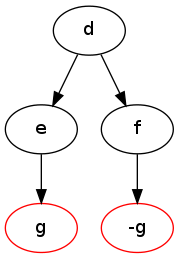The latest CryptoMiniSat, version 5.6.3 has been released. This release marks the 12’000th commit to this solver that has weathered more than I originally intended it to weather. It’s been an interesting ride, and I have a lot to thank Kuldeep and NSCC‘s ASPIRE-1 cluster for this release. I have burned over 200k CPU hours to make this release, so it’s a pretty well-performing release (out-performing anything out there, by a wide margin), though I’m working very hard to make sure that neither I nor anyone else will have to burn anything close to that to make a well-performing SAT solver.
The solver has some interesting new algorithms inside, the most interesting of which is Gauss-Jordan elimination using a Simplex-like method, generously contributed by Jie-Hong Roland Jiang and Cheng-Shen Han from the National Taiwan University. This addition should finally settle the issues regarding Gaussian vs Gauss-Jordan elimination in SAT solvers. Note that to use this novel system, you must configure with “cmake -DUSE_GAUSS=ON ..” and then re-compile.
What’s also interesting is what’s not inside, though. I have been reading (maybe too much) Nassim Taleb and he is very much into via negativa. So I tried removing algorithms that have been in the solver for a while and mostly nobody would question if they are useful. In the end I removed the following algorithms from running by default, each removal leading to better solving time:
- Regular probing. Intree probing is significantly better, so regular probing is not needed. Thanks Matti/Marijn/Armin!
- Stamping. This was a big surprise, especially because I also had to remove caching, which is my own, crappy (“different”) version of stamping. I knew that it wasn’t always so good to have, but damn. It was a hard call, but if it’s just slowing it down, what can I do. It’s weird.
- Burst searching. This is when I search for a short period with high randomness all over the search space. I thought it would allow me to explore the search space in places where VSIDS/Maple doesn’t. Why this is slowing the solver down so much may say more about search heuristics/variable bumping/clause bumping than anything.
- Note that I never had blocked clause elimination. It doesn’t work well for incremental solving. In fact, it doesn’t work at all, though apparently the authors have some new work that allows it to work, super-interesting!
I’m nowadays committed to understanding this damned thing rather than adding another impossible-to-explain magic constant to make the solving 10% faster. I think there is interesting stuff out there that could be done to make SAT solvers 10x, not 10%, faster.


